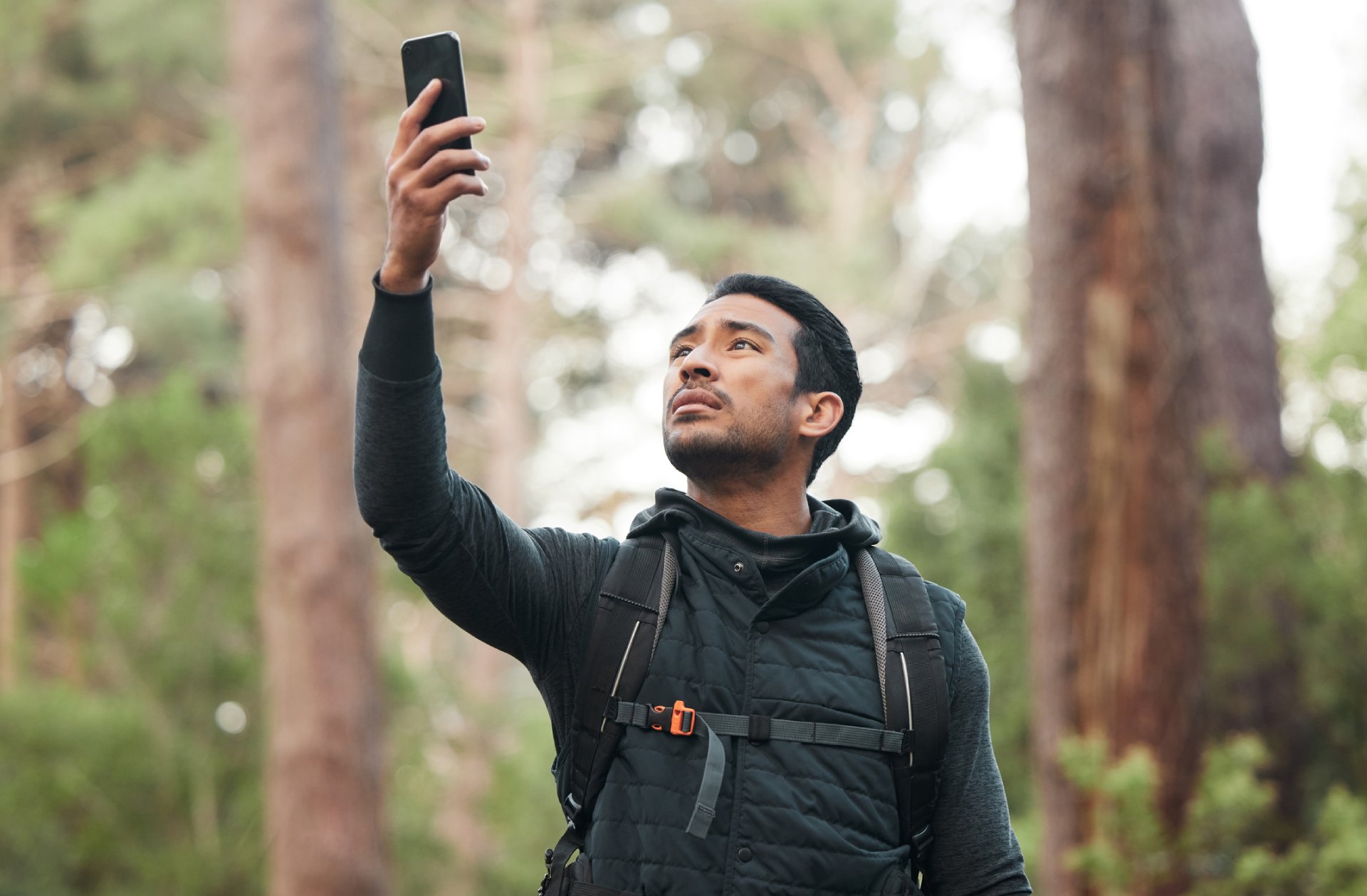Article Highlights
- Explore the latest SATCOM innovations, including smartphone integration.
- Understand global restrictions on satellite devices, like India’s GPS bans.
- Learn how satellite messaging aids emergency services via Global Rescue.
- Discover the revenue growth of SATCOM services, surpassing broadband by 2027.
- Real-life rescues show the importance of understanding SATCOM capabilities.
Satellite communication (SATCOM) technology has revolutionized how we stay connected, particularly in emergencies. The advent of devices like Skylo, SpaceX’s Starlink, and AST SpaceMobile has brought emergency satellite messaging and GPS capabilities to the forefront, offering life-saving solutions even in the most remote locations. However, as these technologies grow, so do the complexities of regulations and global adoption.
In recent years, SATCOM devices have advanced to offer direct connectivity to unmodified smartphones. Companies like AST SpaceMobile and Skylo and pioneers like SpaceX’s Starlink lead this innovation. These systems integrate satellite networks with terrestrial cellular services, allowing smartphones to connect to satellites in areas without cell coverage. This game-changing application will generate $16.8 billion in revenue by 2028, overtaking broadband as the leading satellite use case.
Currently, satellite broadband leads the market, with providers like Starlink generating $7.9 billion annually. However, direct-to-smartphone connectivity is expected to surpass broadband by 2027, growing from virtually no revenue today. Meanwhile, IoT satellite applications will remain a smaller niche, exceeding $1 billion by 2028.
Real-Life SATCOM Stories: The Importance of Global Rescue
SATCOM devices are invaluable during emergencies, as shown by numerous Global Rescue operations:
- Life Raft Rescue: Off the coast of Georgia, an SOS from a satellite messaging device alerted the United States Coast Guard, leading to the safe recovery of stranded sailors.
- Snake Bite in Australia: A woman bitten by a black snake used a satellite device to send an SOS. Global Rescue coordinated with first responders, ensuring her evacuation and medical care.
- Hiker in Sweden: A dislocated shoulder in a remote area led a 31-year-old hiker to request help via a satellite device. Global Rescue facilitated a helicopter evacuation at no cost to the patient.
- Motorcycle Accident in Australia: After a crash in Wyandra left a 54-year-old woman with breathing difficulties and suspected broken ribs, her SOS led to immediate medical assistance.
These examples underline the importance of understanding how to use SATCOM devices effectively. Always familiarize yourself with your device’s SOS features, know who receives the alerts, and ensure your emergency contact information is current.
Regulations and Risks: A Cautionary Tale
Not all countries embrace SATCOM technology equally. Canadian traveler Tina Lewis’s experience highlights the risks of carrying satellite devices in restricted regions. During an extended stay in India, Lewis was detained at Goa’s Dabolim International Airport when security discovered her Garmin inReach Mini GPS device, banned under the Indian Wireless Telegraphy Act of 1933.
The law prohibits the possession of any “wireless telegraphy apparatus” (including satellite communication devices like GPS) without a license, essentially making it illegal to carry most GPS devices with satellite functionality in India without proper authorization from the government.
Bringing an unauthorized and unregistered satellite phone into India can lead to significant legal complications, including arrest and detention. Lewis spent six days and thousands of dollars navigating the court system to recover her passport and continue her journey. However, satellite phones can be e-registered and licensed with the Department of Telecommunications if traveling to remote regions in the country.
Where Is SATCOM Banned?
Countries like India, China, Russia, and Pakistan enforce strict bans or restrictions on satellite devices. Travelers should consult Global Rescue or local authorities before bringing SATCOM equipment into these regions. Ignorance of these rules can lead to severe consequences, including fines, detentions, or confiscation of devices.
- North Korea – The use of satellite phones is highly restricted. While it is illegal to travel to North Korea with an American passport, tourists who are permitted to visit are not allowed to bring in or use satellite communication devices without special permission.
- China – In China, the use of satellite phones is regulated, and visitors may be required to obtain a permit before using such devices within the country.
- Myanmar – Myanmar officials restrict the use of satellite phones, and travelers must declare and register their devices upon entry into the country.
- Cuba – In Cuba, visitors must obtain a government permit to use such devices.
Satellite phones and devices are illegal or strictly regulated in Bangladesh, Nigeria, Chad, Russia, Sri Lanka, Sudan and Pakistan.
How SATCOM Devices Aid Emergency Services
Global Rescue responds to hundreds of monthly SOS alerts, using SATCOM devices to coordinate critical medical and security assistance. These devices bridge the gap when traditional communication methods fail, ensuring:
- Two-Way Messaging: Real-time updates with emergency responders.
- Location Tracking: Accurate GPS coordinates for swift rescues.
- Worldwide Coverage: Connectivity in remote and dangerous areas.
For example, a satellite messaging device owner in Sweden was able to immobilize a dislocated shoulder following instructions from Global Rescue’s medical team while awaiting a helicopter evacuation. Such scenarios highlight the life-saving potential of SATCOM devices in emergencies.
The Future of SATCOM Devices
The integration of SATCOM technology into smartphones is still in its infancy, but it promises transformative changes:
- Improved Accessibility: Smartphone users can access satellite services without specialized equipment.
- Cost Efficiency: As technology scales, costs are expected to decrease, making SATCOM more accessible to everyday users.
- Broader Applications: Beyond emergencies, SATCOM could enhance IoT connectivity, enable better disaster response, and revolutionize rural communications.
However, users must remain aware of regulatory hurdles and limitations. Governments and companies must collaborate to create frameworks that balance security concerns with the benefits of widespread SATCOM adoption.
The Global Rescue Connection
SATCOM technology is redefining global communication, particularly in emergencies. From Tina Lewis’s cautionary tale in India to life-saving rescues coordinated by Global Rescue, the importance of understanding SATCOM capabilities and regulations cannot be overstated. As companies like Skylo, SpaceX, and AST SpaceMobile continue to innovate, the potential of SATCOM devices to enhance connectivity and safety worldwide grows exponentially. For travelers and adventurers alike, these devices are not just tools but lifelines.
“We always recommend that if you’re traveling, especially to remote locations where cellular service is not guaranteed, pack a satellite phone or messaging device and extra batteries,” said Harding Bush, associate director of security for Global Rescue. “If you’re concerned enough about your travel communications to buy one of these devices, then you also need a Global Rescue membership.”
Remember: Global Rescue services are not just for emergencies and rescues. Medical and security professionals are available 24/7 to answer any concerns regarding your travel plans, activities or health and safety questions.









